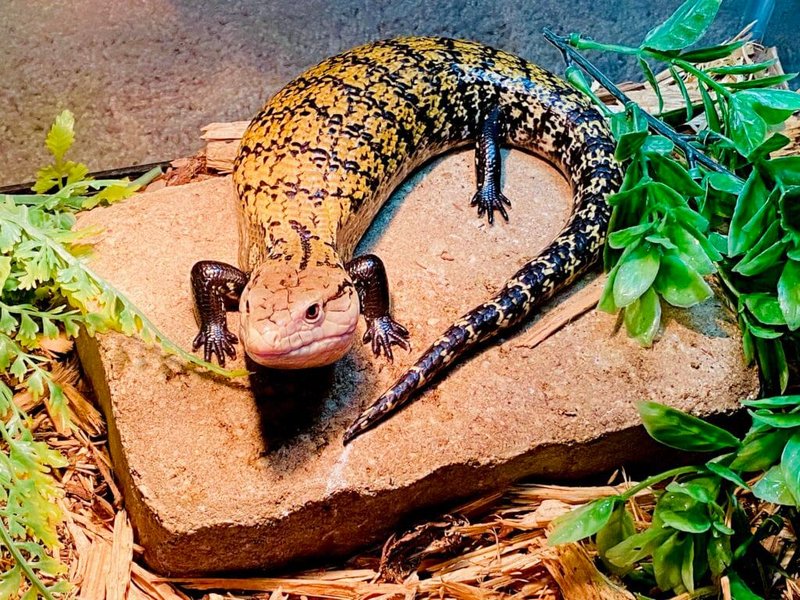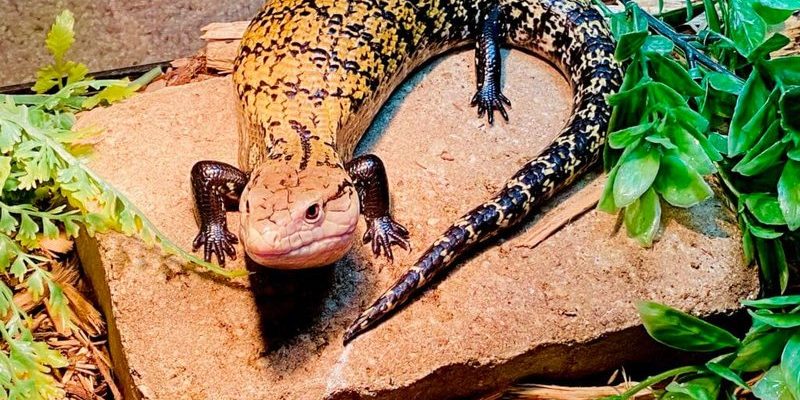
You might be wondering why a lizard, of all things, would carry any cultural significance. Well, just like the striking colors of a rainbow or the gentle sway of trees in the wind, certain animals can represent deeper meanings in our lives. The blue-tongue skink, native to Australia and New Guinea, is a prime example of how nature can impact storytelling, folklore, and even identity for various cultures. So, let’s dive into the world of the blue-tongue skink and explore its role in culture and symbolism.
Physical Characteristics and Behavior
Before we delve into its cultural significance, it’s worthwhile to know what the blue-tongue skink looks like. At first glance, you might notice its large, stout body covered in smooth scales. These lizards boast a range of colors, typically with a brown or tan base, while the standout feature is, of course, that arresting blue tongue. When threatened, they display this bright tongue as a warning to predators—it’s like waving a flag saying, “Back off!”
The blue-tongue skink is a diurnal creature, meaning it’s most active during the day. They thrive in diverse habitats, from forests to grasslands, often seeking shelter under logs and rocks. These skinks are generally calm and non-aggressive, which makes them popular pets. Their unique behavior and appearance contribute greatly to their symbolism in various cultures.
Symbolism in Indigenous Cultures
Indigenous Australian cultures have long cherished the blue-tongue skink. For some, it symbolizes wisdom and protection. The lizard’s ability to blend into its surroundings resonates with the idea of adaptability and resilience. You might find that fascinating, especially if you think about how those traits apply to human life.
In dreamtime stories, these skinks sometimes represent safeguarding the land and preserving balance in nature. Legends often illustrate them as clever beings that can navigate both land and people, reminding us of the interconnectedness of all living things. This deep reverence for the blue-tongue skink is evident in art and storytelling that emphasize its qualities and contributions to the ecosystem.
In Modern Culture: Media and Representation
The blue-tongue skink doesn’t just reside in ancient tales; it has found a place in modern media, too. You’ll spot these charming lizards in nature documentaries, cartoons, and even social media. Their quirky appearance has made them favorites among wildlife enthusiasts and educators alike.
Because of its gentle nature, the blue-tongue skink is often used in educational settings to teach children about reptiles and biodiversity. Playful stories about these skinks can spark interest in wildlife conservation, illustrating how every creature, no matter how small, plays a vital role in our ecosystem. This modern portrayal goes hand in hand with a growing appreciation for the importance of biodiversity.
Mythology and Folklore
As with many animals, the blue-tongue skink has slipped into the threads of mythology and folklore. In Australia, these skinks appear in stories that focus on their cleverness and survival skills. Some tales depict the skink as a trickster, outsmarting predators or overcoming challenges in its environment.
One story might involve a blue-tongue skink who cleverly tricks a hungry bird into thinking it’s dangerous, using its striking tongue as a distraction. This storytelling aspect underscores the importance of quick thinking and nature’s sharp instincts. It invites listeners to think about how we can all learn from nature’s lessons.
Connecting to Nature: Why It Matters
You may be asking, “What does any of this mean for me?” Well, the blue-tongue skink serves as a reminder of our connection to the natural world. Understanding its role in culture and symbolism can deepen our appreciation for wildlife and foster a sense of responsibility towards protecting it.
By sharing stories about the blue-tongue skink and its significance, we can inspire others to explore nature. Whether it’s through hiking in the woods or simply observing wildlife in our backyards, these small actions enrich our lives and bring us closer to the beauty of Earth.
In a world often focused on technology and fast-paced living, the blue-tongue skink stands as a beautiful reminder of the wonders of nature. Its cultural significance stretches across time and geography, highlighting qualities like adaptability, wisdom, and connectedness.
Embracing these symbols can inspire us to pause and reflect on our relationship with the natural environment. So, next time you think of the blue-tongue skink, remember it’s more than just a lizard—it represents a legacy of stories, a bridge between cultures, and a vital part of our ecosystem. Understanding these connections not only enriches our lives but also helps preserve the stories of creatures like our charming friend, the blue-tongue skink.

